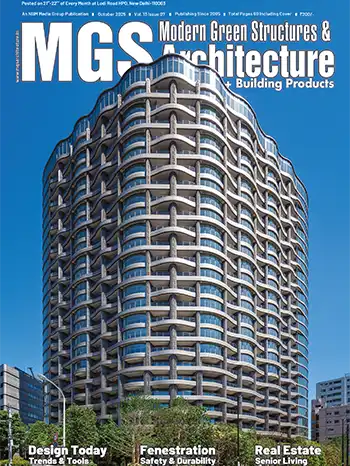Ananda Vir - Founder, MorphRE

Synergy of BIM and AI in Modern Urbanism
Rapid urbanization across the globe presents a growing challenge to architects, planners, and city governments. Designing cities that are inclusive, sustainable, and adaptable to future demands is no longer a choice but a necessity. Traditionally, urban design was often a top-down process, with architects and city planners making decisions without enough input from the communities who would live in these spaces. However, the advent of cutting-edge technologies, such as Building Information Modeling (BIM) and Artificial Intelligence (AI), is revolutionizing this paradigm.BIM and AI are reshaping urban planning by fostering collaboration between various stakeholders—including citizens—and leveraging data-driven solutions to create cities that are smarter, more sustainable, and resilient. MorphRE, specializing in BIM integration, has been applying these technologies to create participatory, sustainable urban designs that empower communities and prepare cities for the future.
Empowering Stakeholders Through BIM
In the past, urban design was typically driven by architects and planners with limited community input, often resulting in cities disconnected from residents’ real needs. The rise of participatory urban design—driven by BIM—has transformed this model, making urban planning more inclusive.BIM enables collaboration by providing a unified digital platform where architects, engineers, planners, and communities can work together. This real-time, interactive environment allows various stakeholders to visualize and modify urban designs, ensuring that the end result reflects the diverse needs and desires of everyone involved. Incorporating the voices of communities into the planning process is critical to the success of any urban project. BIM democratizes this process by making complex technical data accessible to everyone, ensuring that architects’ designs reflect the unique cultural, social, and environmental needs of the spaces they create.
The future of urban design lies in adaptable, participatory cities that work for everyone, and with BIM and AI, this future is achievable.
Ananda Vir
Notable Projects
One of MorphRE’s flagship projects, Zydus Corporate Park in Ahmedabad, offers a compelling example of how BIM can drive collaborative design in the urban environment. The firm used BIM to integrate real-time data from architects, engineers, and the future occupants of the park, ensuring the design met both technical requirements and user comfort. Community engagement also played a key role, with local cultural elements influencing the design. By leveraging BIM, MorphRE facilitated the integration of vernacular architecture—such as inspiration from Ahmedabad’s historical forts and stepped courts—into the building model. These design elements were iteratively tested and optimized for sustainability, allowing the project to harmonize modern innovation with traditional aesthetics.The Zydus Corporate Park project, which significantly reduces energy consumption and fosters a conducive work environment, showcases how BIM ensures that urban designs meet technical, cultural, and social needs, paving the way for more human-centered urban environments.
MorphRE is pushing the boundaries of innovation and efficiency in building design and construction. Our portfolio of esteemed clients includes Godrej Properties, K Raheja Corp., Infosys Ltd., Wipro Ltd., Tata Realty & Infrastructure Ltd., Zydus, and many others.
Role of AI in Next-Gen Cities

Data-Driven Urban Planning for Sustainability
One of the most significant benefits of combining AI with BIM in urban design is the ability to create more sustainable cities. AI’s capacity to analyze vast datasets, such as energy consumption and waste management, enables the creation of designs that minimize environmental impact while maximizing efficiency. MorphRE uses AI to determine the optimal placement of solar panels, green roofs, and water management systems, significantly reducing the city’s carbon footprint. Meanwhile, BIM models help visualize and simulate these changes in real time, ensuring the design’s feasibility and effectiveness.
Resilience and Adaptability: Preparing Cities for the Future
AI and BIM’s collaborative synergy ensures that cities can meet sustainability goals without compromising on functionality or aesthetics. AI-powered BIM can be used to design flood-resilient infrastructure in regions prone to natural disasters. By analyzing historical weather data, and creating predictive models to identify high-risk areas, infrastructure can be designed accordingly, ensuring that the city’s buildings and public spaces would remain functional in the face of future environmental challenges.As climate change and population growth put increasing pressure on urban environments, the need for cities to adapt to these challenges becomes more urgent. AI’s ability to analyze past data and predict future events—such as floods, heat waves, and infrastructure failures—ensures that cities are built to withstand the challenges of tomorrow. By analyzing data on pedestrian traffic, mobility patterns, and public space usage, AI provides insights into how cities can become more walkable, bike-friendly, and socially engaging.















